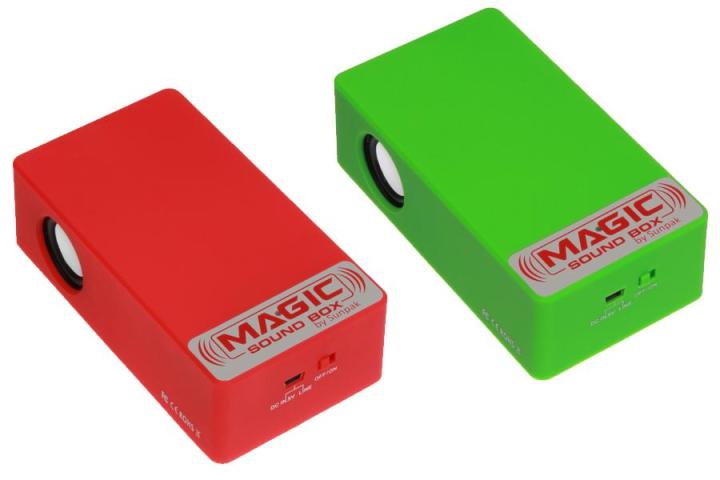
Have you ever come across a product online or at a store that seems intriguing but the design looks like it came straight from 1992? That was out first impression of the Magic Sound Box. We saw it for the first time at a trade show earlier this summer. The folks at Sunpak were eagerly demonstrating how this little plastic box could amplify a smartphone’s speakers to the point where it can “fill a room with sound.” A noisy show floor is not the place to test such claims, so we asked for a chance to try it on our own. Not long ago the Magic Sound Box arrived (sadly, not via owl from Hogwarts) and we fired up our music player.
The real ‘magic’ behind the Magic Sound Box is that it doesn’t need a Bluetooth or other fancy wireless connection to amplify audio. Instead, it uses an older wireless protocol: sound waves. When properly loaded up with AA batteries all you have to do is place your smartphone’s speaker grille over the Induction Area and, abracadabra! the audio gets way louder. The two speakers on each side deliver the amplified sound and can indeed fill a room.
Volume isn’t the only measurement of a good speaker. There’s also audio quality. Alas, even magic can’t make this technology produce well-rounded audio. In fact, the quality of the output was directly tied to the input. If the speakers on your phone pump tinny, flat sound, the MSB will amplify tinny, flat sound. Listening to music wasn’t a great experience. Podcasts and audio books sounded fine. If you’re having trouble waking up in the morning because your phone’s alarm isn’t loud enough, pop it on the Magic Sound Box and that won’t be a problem anymore.
So, we know it works. The next question is: why would you buy it?
Sunpak sells the Magic Sound Box for $25 and you can get unbranded versions of it for less. There are a number of small and portable Bluetooth speakers and wired speakers that cost about the same or slightly more. The quality isn’t spectacular, though in most cases it’s better than what the Magic Sound Box provides. The biggest advantage we could come up with is that the Magic Sound Box uses very little energy – probably less than a speaker dock. Other than that, we can’t think of a reason to own it.
But hey, the Magic Sound Box works as advertised and doesn’t cost a lot of money. Just because we don’t see many use cases for it doesn’t mean you don’t. After all, over a thousand people love this thing. (We don’t understand that, either.)
Editors' Recommendations
- The ROG Phone 6 Diablo Edition looks like it’s straight out of hell
- Honor’s Magic V foldable reappears flaunting a more premium look than the Fold 3


